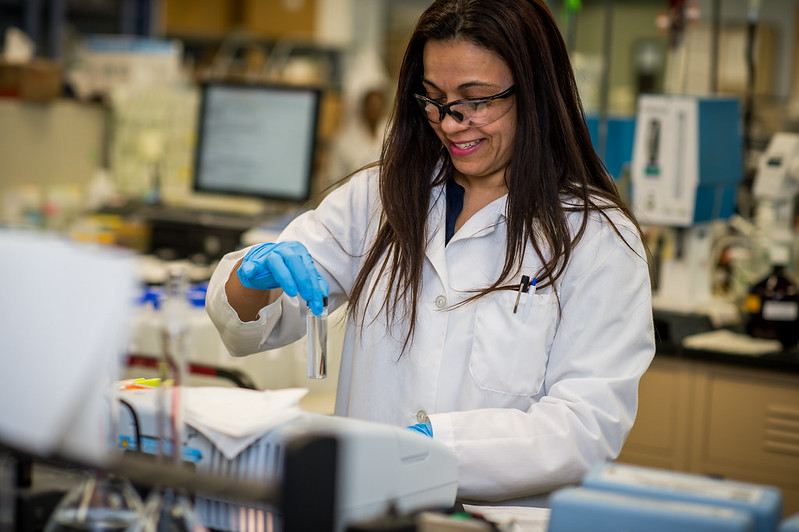
The Philadelphia Water Department Bureau of Laboratory Services helped complete the study of PFAS in local waters. Credit: photo by JPEG Photo & Video, for PWD
You may have heard about it in the news as a topic of national concern: PFAS is a group of man-made substances that were widely used for decades in firefighting foams, waterproof clothing, furniture, and food packaging.
Initial research suggests certain types of PFAS—a family of nearly 5,000 per- and polyfluoroalkyl substances—may be linked to health problems.
PFAS can be found everywhere on the planet: in the environment, in food, in both tap and bottled water, and in humans. The widespread presence of these substances has led to a growing interest in research in the public health community.
At the Philadelphia Water Department, our focus is on the potential presence of these chemicals in your drinking water—and we’re even looking for amounts as small as a single grain of sugar in an Olympic-sized swimming pool.
How small?
For context: Drinking one gallon a day, it would take more than 1,800 years to consume the volume of water in an Olympic pool. Most people drink less than a gallon daily.
PFAS is not currently among the approximately 100 contaminants that safe drinking water regulations require water providers like the Philadelphia Water Department to sample for. Nonetheless, in 2019, we voluntarily began proactive PFAS testing in the rivers and creeks supplying Philadelphia’s drinking water.
The result: our study found no concentrations above the Environmental Protection Agency's health advisory level of 70 parts per trillion of PFOS and PFOA combined.
We looked for PFOS and PFOA because those are the two most common types of PFAS found in our region. PFAS compounds were detected in local waterways, but at low levels.
We have also had an independent look at our water. Studies separate from our work—led by EPA and Pennsylvania Department of Environmental Protection—indicate non-detectable PFAS concentrations in Philadelphia’s drinking water.
Read the full PWD report here:
PFAS Water Resources Characterization Study
Ongoing Watershed Protection
PWD continues to test for PFAS in Philadelphia's waterways, collaborate with neighboring water utilities, and follow the latest scientific advancements and studies.
Even though PFAS is a relatively new concern, PWD has long defended our rivers from the threat of pollution to ensure safe, high-quality drinking water.
“We still have a lot to learn about PFAS,” says Kelly Anderson, PWD's Watershed Protection Program Manager. “It's what we call an emerging contaminant, and fortunately we have a lot of experience in facing these challenges over the years by using the best available science. The bottom line is that we work every day to protect the water that we all drink in our homes.”
Whether it's laboratory testing, emergency notification systems, computer modeling, or regional partnerships, PWD has multiple tools to safeguard the city's water supply.